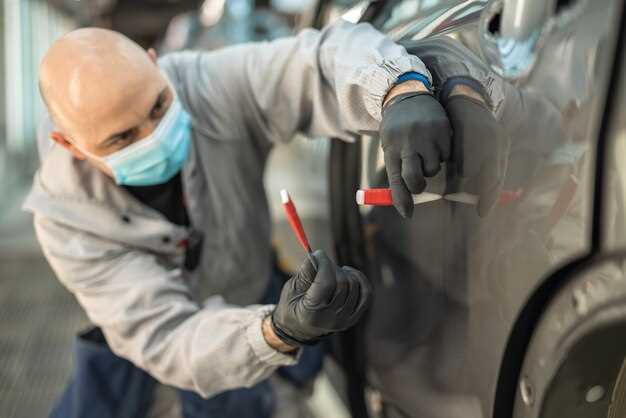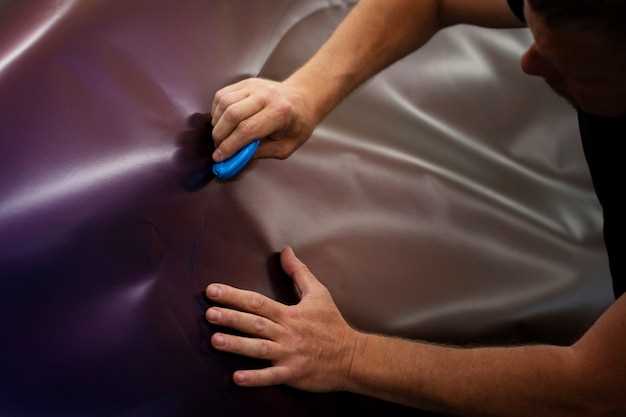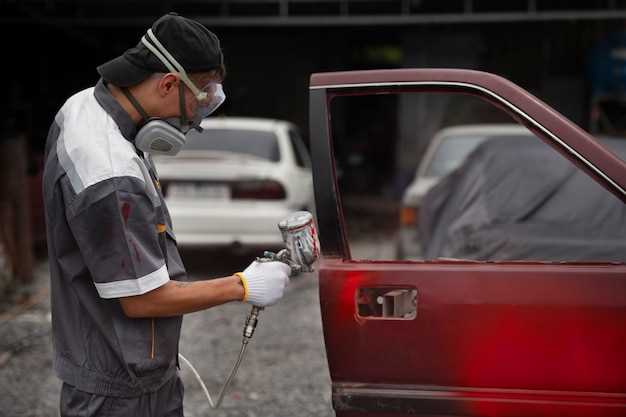
Repainting your car is not just about enhancing its aesthetic appeal; it also plays a crucial role in protecting the vehicle’s surface from potential damage. Knowing when to repaint your vehicle can save you time, money, and frustration in the long run. This article will explore the optimal times for repainting your car, focusing on various signs that indicate it might be time for a fresh coat.
One of the most obvious signs that your car needs repainting is the appearance of fading paint. Over time, exposure to sunlight and environmental pollutants can cause the color to dull, making the vehicle look worn out. Additionally, if you notice that the paint is starting to chip or peel, it is essential to address the issue promptly. Ignoring these signs can lead to rust formation and further damage to your car’s body.
Another critical factor to consider is the age of your vehicle. Cars that are several years old may benefit from a repaint, not only to restore their original luster but also to maintain their resale value. A well-maintained exterior can significantly impact potential buyers’ perceptions, making it a worthwhile investment. Understanding the optimal times for repainting your car can ensure that it stays in excellent condition for years to come.
Signs That Indicate Your Car Needs a Fresh Coat

There are several signs that can help you determine whether it’s time to repaint your car. Recognizing these indicators early can prevent further damage and maintain your vehicle’s aesthetic appeal.
First, check for noticeable fading in the paint. If the color of your car is no longer vibrant and appears dull, it may be a sign that the clear coat is deteriorating due to exposure to sunlight and environmental elements.
Another clear indication is the presence of scratches and dents. If your vehicle has sustained significant damage from minor accidents or everyday wear and tear, a fresh coat of paint can restore its original look and protect the underlying metal from rust.
Look for chipping paint, which can occur due to gravel and debris on the road. When paint starts to chip away, it exposes the metal underneath, increasing the risk of corrosion. Repainting can help prevent further deterioration.
Additionally, if you notice rust spots appearing, it’s crucial to act quickly. Rust can spread if not addressed promptly, and a repainting job can help eliminate existing rust and prevent future damage.
Finally, consider the overall condition of your vehicle. If it has experienced significant wear over time, a new paint job can greatly enhance its appearance, potentially increasing its resale value.
Recognizing these signs can help you decide when it’s time to repaint your car, ensuring it remains in great condition for years to come.
Best Seasonal Times for Car Repainting

Choosing the right season for car repainting can significantly influence the quality of the finish and the longevity of the paint. Each season presents unique advantages and considerations that can affect the repainting process.
Spring is often regarded as one of the best times to repaint a car. As temperatures begin to rise, the weather becomes more consistent, allowing for better application conditions. The moderate temperatures help the paint cure properly, reducing the likelihood of imperfections. Additionally, spring provides a well-timed opportunity to refresh a vehicle’s appearance after winter wear.
Summer, while also a popular choice, poses challenges due to high temperatures. Extreme heat can cause paint to dry too quickly, leading to issues such as uneven finishes and poor adhesion. However, if managed carefully, summer can still be suitable for repainting, particularly in regions with milder summer climates. Adequate shade and controlled environment conditions are essential for achieving optimal results during this season.
Autumn is another excellent time for repainting cars. The weather is often mild, allowing for proper paint application and curing. Additionally, getting a vehicle repainted before winter can protect it from harsh weather conditions and potential damage from road salt and grime. Preparing the car for winter by applying fresh paint creates a barrier against environmental stressors.
Winter is generally less favorable for car repainting due to low temperatures and increased humidity, which can adversely affect the paint’s adherence and drying time. If it’s essential to repaint in winter, consider using a heated garage or professional facilities equipped for low-temperature conditions. Otherwise, it’s advisable to wait for more conducive weather.
In summary, spring and autumn are ideal seasons for car repainting, while summer and winter can present challenges that require careful planning. Timing the repainting process according to seasonal weather can enhance the quality and durability of the finished product.
Cost Considerations for Repainting Your Vehicle
Repainting your car can be a significant investment, and understanding the cost factors involved is essential for making an informed decision. One of the primary considerations is the type of paint and materials used. High-quality paints and finishes, such as ceramic or metallic, tend to be more expensive than standard options. The durability and longevity of these materials can often justify the higher price, as they provide greater protection against environmental damage.
Labor costs also play a critical role in the overall price of a repainting job. Professional services may charge varying rates based on the intricacy of the job, the reputation of the shop, and their geographic location. Shops that specialize in automotive painting typically offer superior craftsmanship, which can significantly affect the final cost.
The condition of your vehicle’s existing paint and bodywork is another important factor. If there are scratches, rust, or dents present, additional preparatory work may be required before the repainting process can begin. This extra work can increase labor costs and affect the total price. It’s crucial to inspect your car for such signs before proceeding.
Additionally, consider any customization options you might want. Simple color changes are generally less expensive compared to complex custom designs or graphics. If you are contemplating adding unique elements, budget accordingly as these added services can significantly inflate costs.
Don’t forget to factor in the long-term benefits of repainting your vehicle. A fresh paint job can enhance your car’s resale value and improve its overall aesthetic appeal. Weighing the initial expenditure against the potential increase in value can provide insight into whether repainting is a worthwhile investment. Overall, being aware of these cost considerations will help you navigate the process effectively and ensure you make the best choice for your vehicle.




